“Oh, say can you see.” Team USA and the Island Classic – With Phil Hall
This year’s Island Classic was my sixth in a row. I first went in 2012 and did so only because my Facebook friend, Edwin Haazer had said that he was coming to Australia to ride at the meeting. That year he rode a bike supplied by Team Sunset Racing’s Roger Gunn and he had a great time racing on the other side of the world. It was during that first visit that I quite accidentally fell into the job with MotoPod, recording interviews with riders after Ed found that it wasn’t anywhere near as easy as Jim Race had told him it would be!
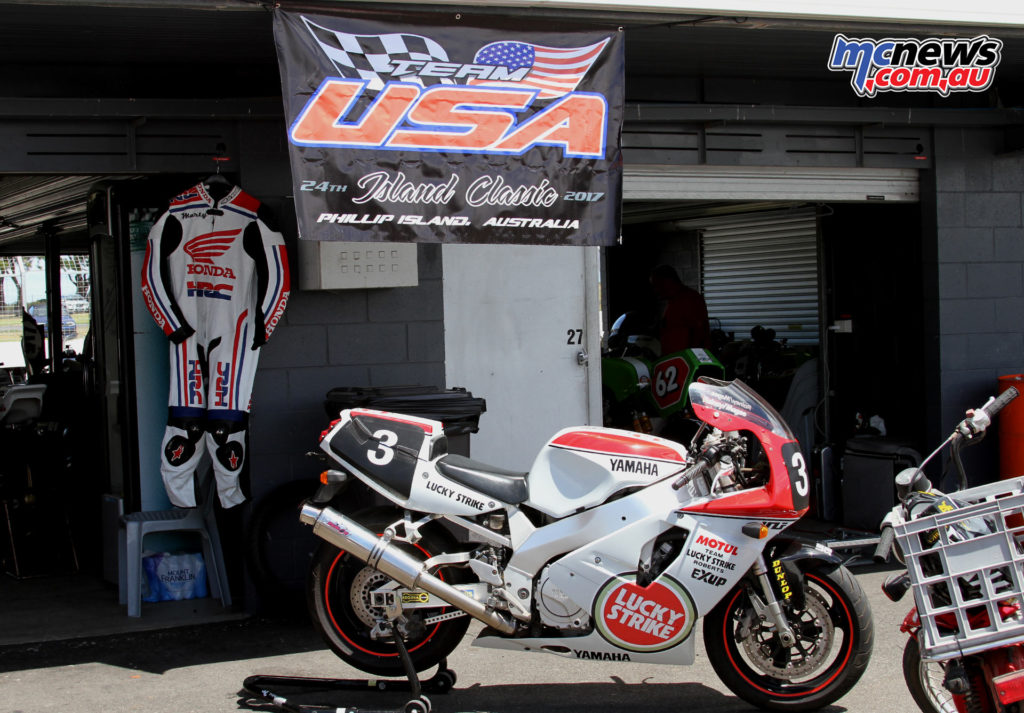
And it was during that first meeting that I was introduced to Ed’s mate from Reno, Nevada, Jimi Mac, who was also there at the invitation of Roger and was riding another of the yellow Suzukis. Several American riders had previously visited the Island Classic but it was at this meeting that the idea for an American team to take on the Brits and Australia began to take a solid form. As I was already friends with Jimi and Ed, each succeeding year saw me being, at least for one weekend of the year, an honorary American, acting as an unofficial liaison person for what became Team USA and being the general gofer as well as performing my MotoPod duties.
So I found myself, a fifth generation Australian, spending a great deal of time in Team USA’s pit and actively supporting their racing effort any way that I could. And during the intervening years, acquaintances have become friends and even though I only see them once a year, I count most of these guys and girls as being some of my closest. The team has fluctuated in size (it’s a pretty expensive exercise to bring a bike and associated spares, tools, tyres and paraphernalia half way across the planet). In 2014 the team brought two shipping containers of bikes, one from the west coast and one from the east coast, but that hasn’t happened again.
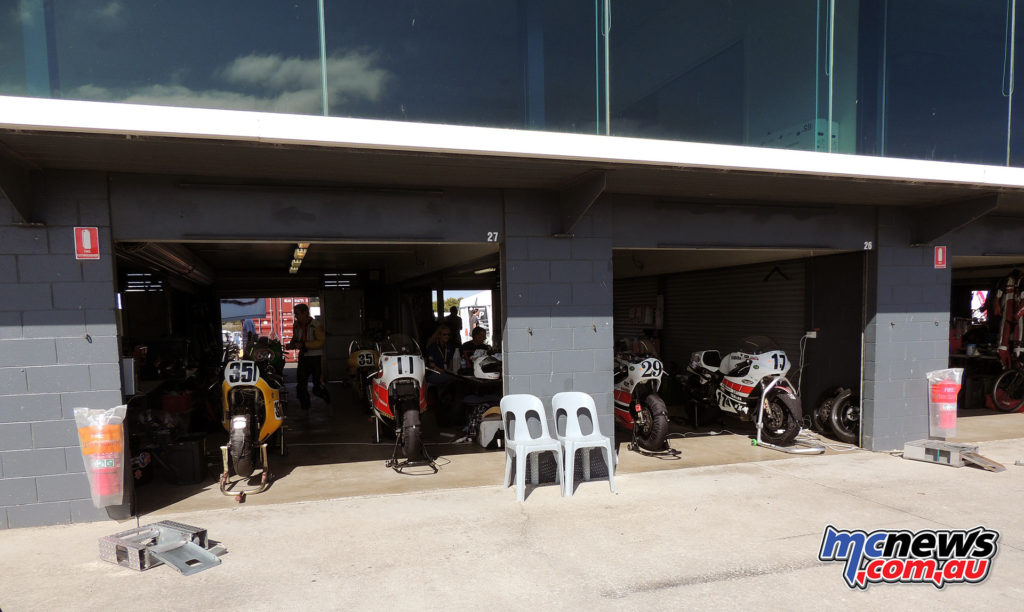
As the years passed I got to know the team and became deeply involved in their trials and tribulations as well as their occasional successes. The team relies heavily on the expatriate Englishman, Dave Crussell. Dave is and has been a US resident for many years and he usually brings a bike for himself to ride and then other bikes on which he puts riders who he believes gives his team (since 2014 he has been Team USA’s Captain) the best chance of success.
In the first year, Team USA’s effort was best described as “bringing a knife to a gun fight”. Historic racing in the US is vastly different to what it is here. It is real historic racing with the bikes being genuine bikes of the period, prepped as best as can be for modern racing. The staple of the Unlimited Class is the classic TZ750 four-cylinder two-stroke racer. Many of the TZ’s that race in AHMRA (American Historic Motorcycle Racing Association) are original bikes and their fanatical and dedicated owners keep the years at bay by constant maintenance, as anybody running an old bike must do.
Some owners, conscious of the need to try and stave off obsolescence, have started updating their TZ’s with new frames, better engine components and running gear. And it was with a collection of such updated machinery that Dave Crussell sought at first to take on the others at the Island Classic. It was immediately apparent, however, that Team USA was terribly out-gunned. Running against brand new XR69 replica Suzukis in Team GB and the mighty Steve Martin and Shawn Giles Katanas, the American bikes were blown into the weeds. It was a very disappointing experience. If the team was to be competitive, there was serious money needing to be spent.
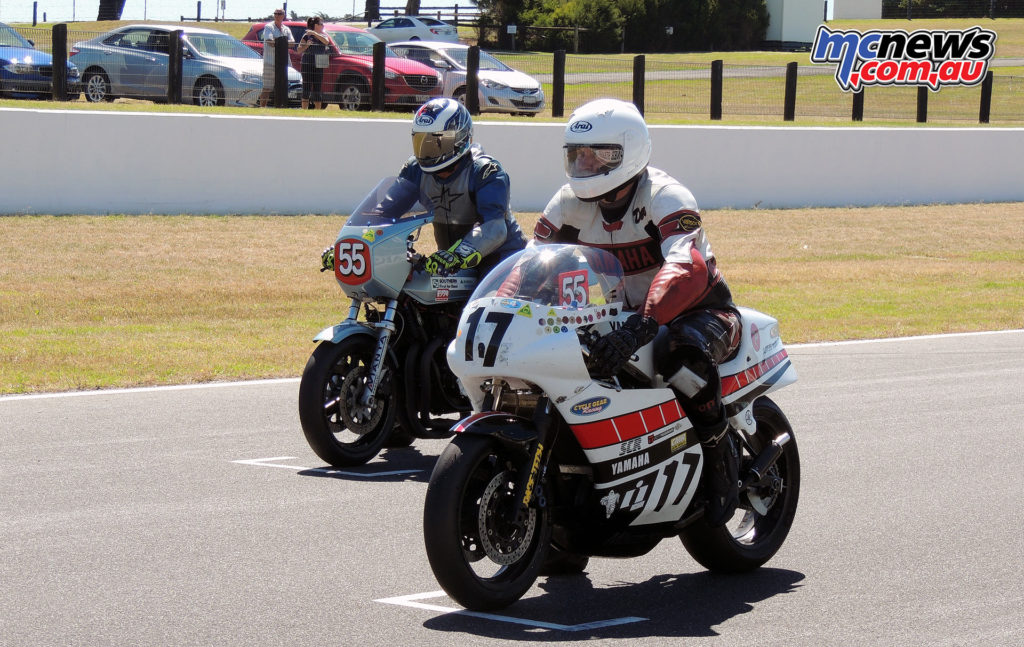
So, each year, Dave and his team have returned, every year bringing better and faster equipment and each year hoping for the gap between the two top teams and them to be narrowed. As well as improving the machinery, the team has hired more experienced and better credentialed riders. And each year the team’s performances have improved. Several of the independents riders have, in the last couple of years, fronted with their own XR69 replicas, even boasting the latest innovation, FJ1200 Yamaha engines.
But the mainstay of their International Challenge eight rider team has been the venerable TZ750’s of Dave Crussell and his riders for hire. Last year he added the biggest name to his team with the hiring of another expat Englishman, the highly regarded Pat Mooney. Dave built an FJ1200 bike for him and Mooney was right on the pace, but the team, though performing at its best and on better bikes, had its usual third position usurped by an upstart team of Irishmen on a rag-tag collection of bikes that came right out of left field.
Boasting a team of completely unknown riders (except for team #1 rider, Paul Byrne, an Aussie resident) the Irish team finished well ahead on points leaving the American languishing in fourth place, a bitter pill to swallow.
So, when 2017 rolled around the American team’s goal was to get back to the position that they had occupied previously, third position on points. Faced with the impregnable might of Team GB and Team Australia, the goal seemed entirely reasonable. Unfortunately, the American team was greatly reduced in numbers, many former team members being unable to raise the capital to make the trip to the Island. So, instead of having an eight rider team for the International Challenge four race series, there were only six Americans entered, the rest of the team being made up by the Aussie riders, Robbie Ruwoldt on his Harris Kawasakis and the veteran Malcolm Campbell on one of Mick Neason’s XR69 Suzukis.
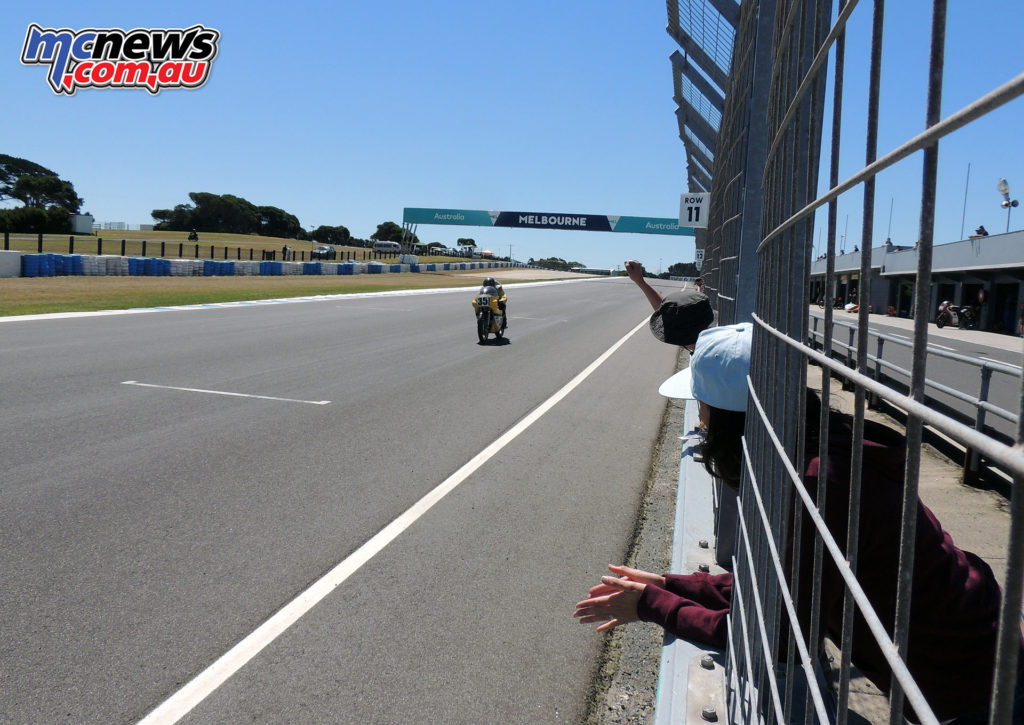
Maintaining and keeping a fractious and delicate race bike competitive this far from home is fraught with danger. You can’t just dash back to your race shop down the street if something goes wrong with the bike. And, for Jimi Mac, it went wrong immediately. The borrowed Kawasaki MkII race bike that belongs to Ed Haazer and which was lent to Jimi for the meeting broke a cam bucket in the first session and did untold and unexplored damage to the top end of the engine. It was parked straight away with no attempt being made to repair it.
Jimi borrowed Glen Crutchley’s Kawaskai but it just wasn’t suitable so he was left with his own spare bike, a Suzuki 700 ESD road bike, pretty much stock even down to standard road bike footpegs. On this totally unsuitable mount, Jimi performed miracles, dicing with and passing bikes that were massively faster than it and providing him with some great memories of 2017 that will go a huge way to erasing the disaster of 2016 where both of his bikes failed in practice.
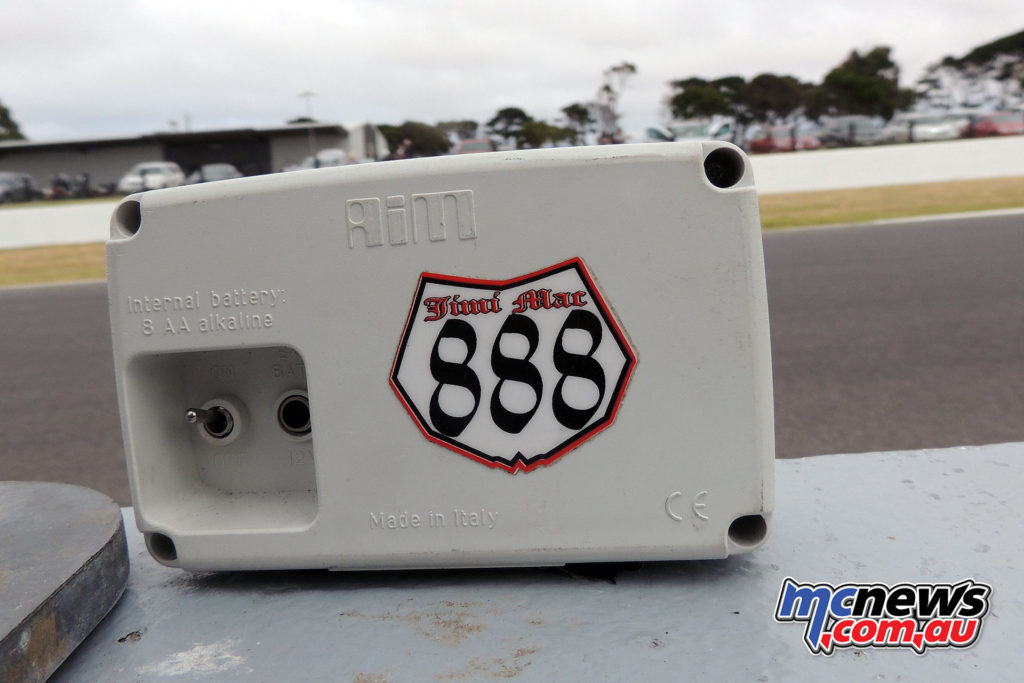
The genial Joe Weir was back for the second year with his CMR-framed Suzuki 1300 XR replica fraught with a persistent oil misting problem that saw the bike finally parked after the third International Challenge race. Joe rode his 1100 Katana in the last round. The amazing Ralph Hudson (about whom I plan to write later) was also in his second year with a CMR-Framed XR69 replica but he suffered from lack of match practice having spent much of 2016 concentrating on his Land Speed Record programme. The bike was fast, fifth fastest overall in the speed trap times, but the rider, by his own admission, wasn’t.
The Crussell bikes went like rockets all weekend, a ‘hooray’ achievement of colossal proportions. Pat Mooney’s 1200 was fast, stable and reliable and he ended the meeting 12th on points, the best of the Americans. After the meeting he hinted that a faster bike was in planning for 2018. Professional to the Nth degree, he has made himself an integral part of Team USA. Dave brought three 750s, one for himself, one for the new kid on the block, the intense and intensely fast Barrett Long, and a spare. The spare was needed. Dave’s bike, now thoroughly sorted and with a 107mph lap around the Isle of Man in its CV, didn’t miss a beat all weekend and only required the usual preparations before each race.
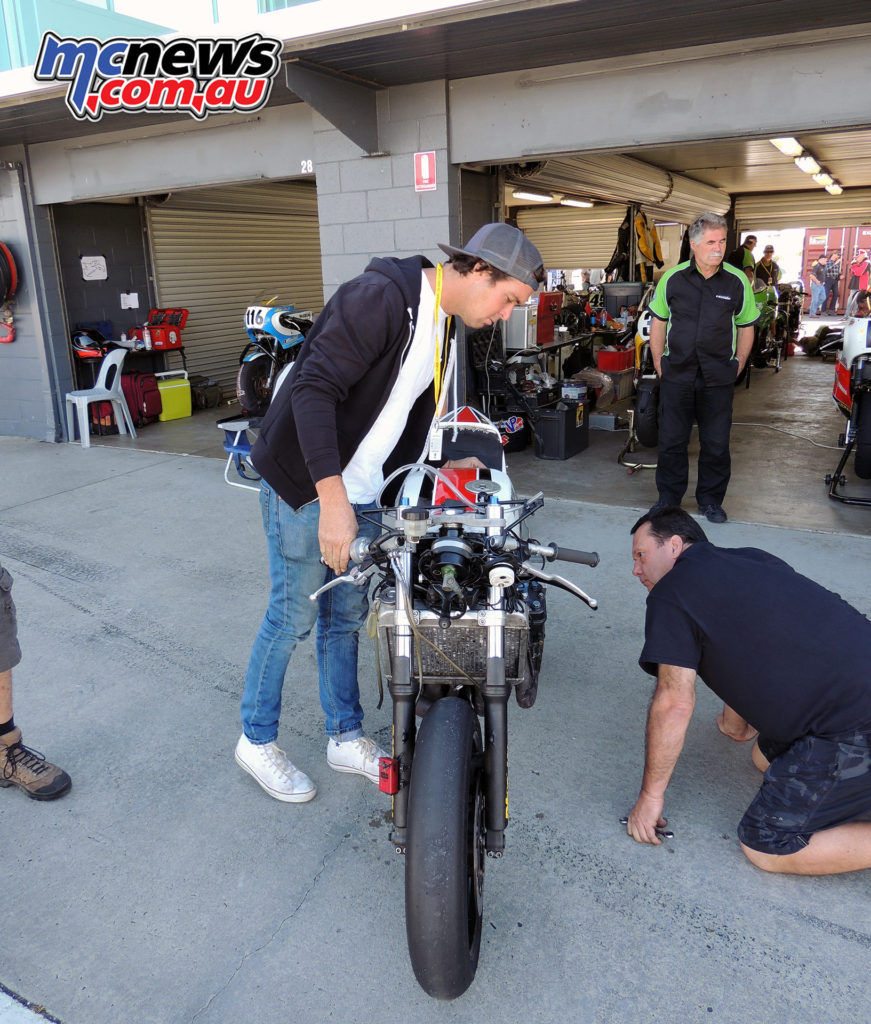
After being very fast in practice, the Long bike (Barrett is the son of famous American road racer, John Long, more about that later too) fell victim to a hard to diagnose misfire and the engine was swapped out with the motor from the spare bike in a frantic overnight session on Friday night. Pushed onto the starter rollers first thing on Saturday morning, the bike fired first time, emitting the glorious “cackle” that TZ fans love to hear. In his first race that morning (which he won), the clutch started to slip and it was replaced and the bike performed perfectly for the rest of the weekend.
The two Aussies drafted into the team had a mixed bag. Robbie Ruwoldt’s Kawasakis never missed a beat and Robbie had a great weekend. Malcolm Campbell’s story was just the opposite. Crashing on someone else’s oil on Friday, the Neason team worked feverishly overnight to repair the Suzuki for Saturday only to have the engine let go in a big way once it was back on the track. Malcolm reckons that it had ingested some dirt in the tumble on Friday. Whatever the cause, he was out for the weekend.
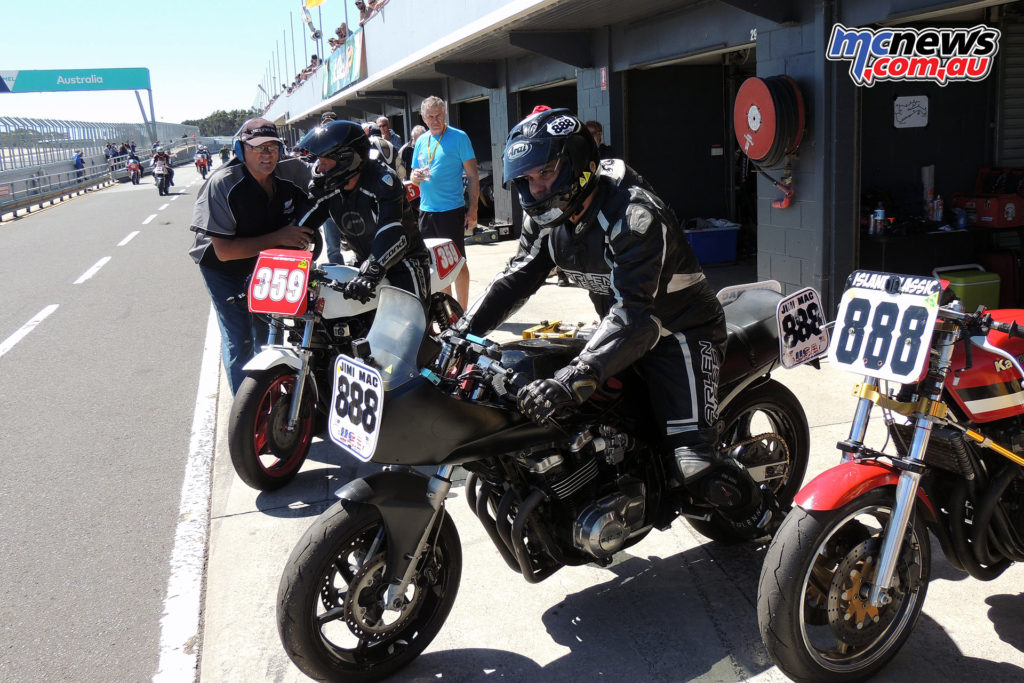
We attempted to recruit former Aussie superbike champion, Marty Cragill into the team and he was keen to do it, but the team just didn’t have enough extra tyres to do another four races. It was a shame because Marty was flying on the Phil Andrea TZ750, winning three of his open class races and finishing second in the other to Scott Webster. Roger Gunn kindly lent the team his rider, Anthony Bann, for the rest of the IC races but the die was pretty much cast by then.
And so Team USA had to settle for fourth place again after the Irish team with faster bikes and faster riders and a year of preparation easily scored third. But, unlike 2016 when the scene in the American pit was one of despair and disappointment, it was one of joy and happiness. Why? Well, for the first time in Island Classic competition, Team USA’s team for the International Challenge finished with a perfect result. All bikes finished in all the four races, a pretty neat statistic.
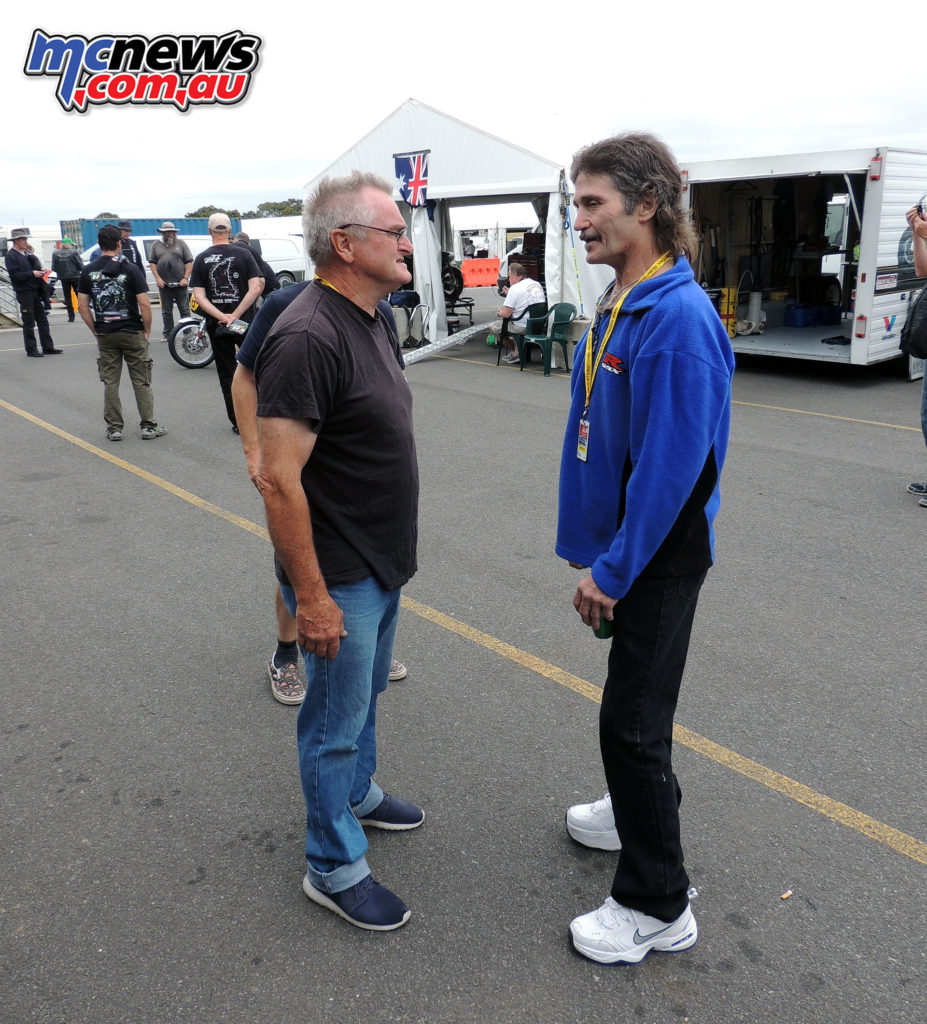
But there were some other reasons for rejoicing as well. Riding at Phillip Island for the first time, Barrett Long won all four of his Unlimited races and did so in emphatic fashion. And Ralph Hudson who had brought along his aging TD2 ‘just for fun’ finished second in his four races, unable to defeat (or even get close to) the flying Murray Seabrook. However, he clinched the second places by more than the length of the straight over the rider in third place in each of the races so he and Barrett contributed greatly in raising the spirits of the American team.
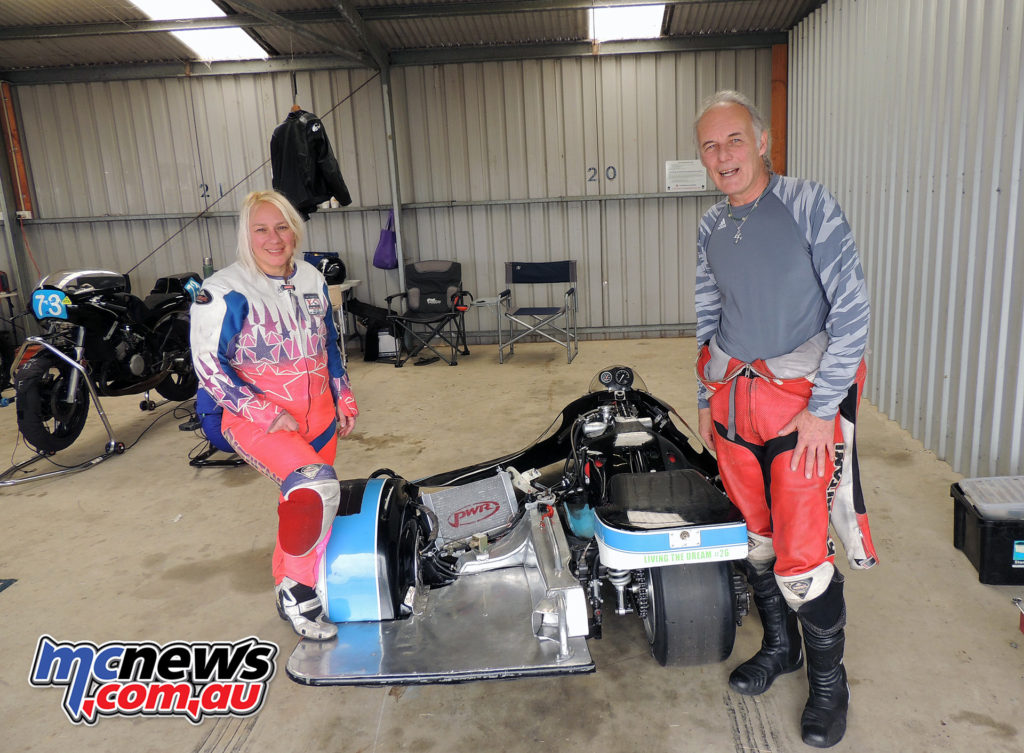
Of course I cannot close without mentioning the performances of my good friends, Wade Boyd and Christine Blunck in the sidecar races. Brought to Australia at the very last minute after sidecar veteran Doug Chivas offered them the use of his TZ750 Windle outfit, the San Francisco pair performed brilliantly on a totally unfamiliar outfit on which they didn’t really fit at all. Wade is much taller than Doug so he found himself sticking up in the wind and unable to tuck in and Christine is much smaller than Doug’s usual passenger so she found that the handles were totally in the wrong place and her ability to do her job properly was severely compromised. And neither of them had ever ridden a two stroke sidecar, nevertheless, despite all of these difficulties, they finished every race with a 9,6,7,5 score sheet, a truly impressive performance. A big thank you to Doug for making it happen.
It was a heartening performance overall for Team USA after the previous year. One can only hope that the stories of success that will be shared once they get home will encourage some more Americans to commit towards flying the Stars and Stripes down under in 2018. As always it was a pleasure and a privilege to be a small part of the team effort and I now resume my normal persona as a fanatical Aussie.























